The blue glass cup, simple in design, has long been associated with Hanoi draft beer. Few people know that behind each handmade cup there are many interesting stories.
The cup "crosses" 2 centuries
For a long time, draft beer has become a familiar cooling drink for many people every summer. Not only in Hanoi, those popular glasses of beer have a strange appeal, becoming one of the typical street cultures in all provinces and cities, from rural to urban.

The cup has a wide mouth and a small bottom, without a handle, making it convenient for stacking. The outside of the cup has raised lines that curve into vertical waves, creating a ridge for the user to hold comfortably and without slipping. Photo: Thach Thao
At Hanoi’s beer bars, whether fancy or ordinary, most diners prefer to use only one type of cup. It is a light blue glass cup, speckled with air bubbles inside, flared at the top, without a handle but sturdy to hold.
Holding a glass of draft beer in his hand, Mr. Tran Minh Quang (born in 1949, from Ha Tinh ) was moved: “Holding this beer, memories of the difficult subsidy period come back to me. Perhaps not only me but many provincial cadres who had the opportunity to work in the capital in 1979 - 1980, and drank a 'tiger cage beer' will never forget that beautiful memory.”
The cup is small but familiar to many generations, lasting as a beautiful cultural feature of beer lovers.
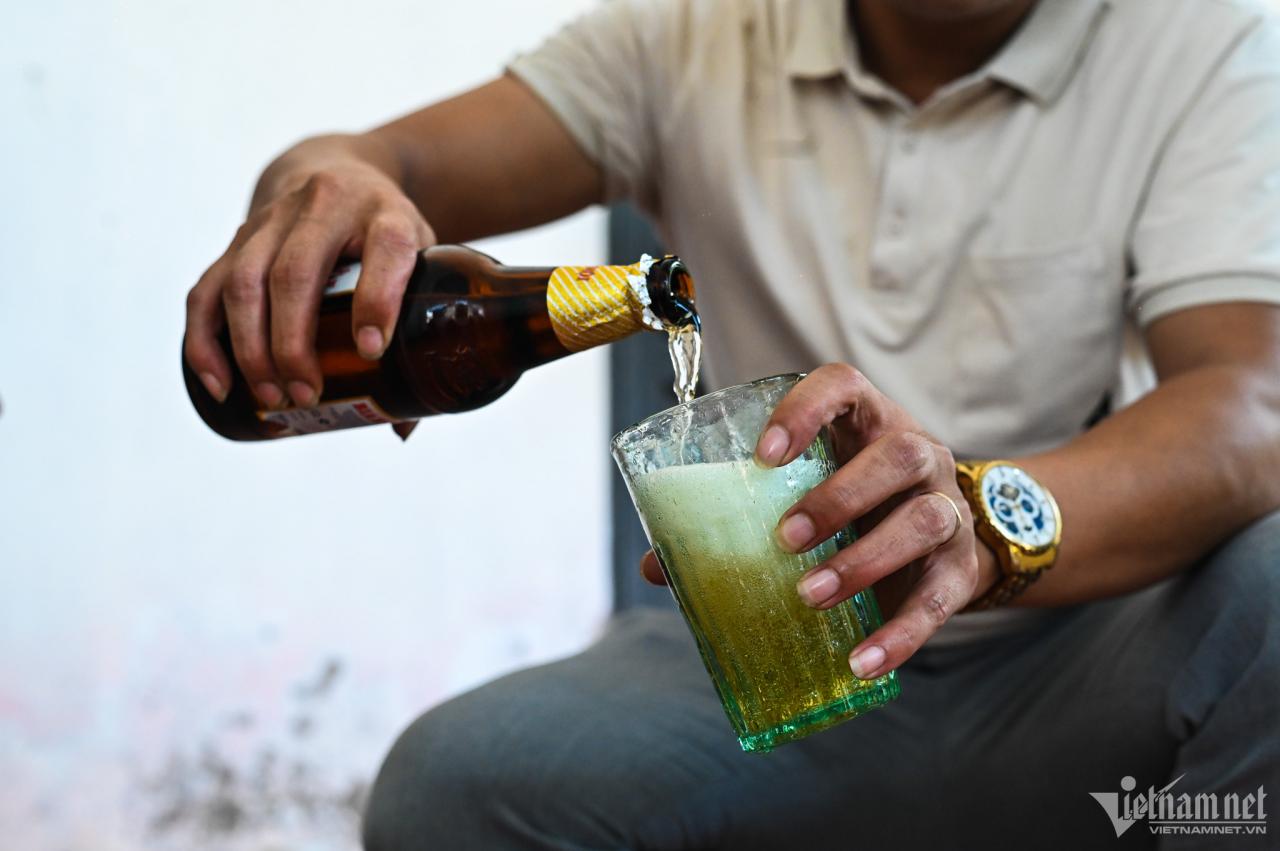
“The rough glass cup with a ‘wavy’ rim that we young people often call a ‘toad-bitten cup’ is very popular with my father. He is fascinated by the pleasant clinking sound that comes out every time he clinks glasses with his friends. The beer foam clings to the edge of the cup mixed with air bubbles, making the drinker feel that the beer is always fresh and delicious. My friends only like to drink beer in this cup,” said Mr. Tuan Linh, the owner of a draft beer store, sharing the reason for using this type of glass cup for customers for ten years.
Few people think that simple, unevenly colored, convex and concave glass cups have such a long-lasting vitality. It is a beer drinking culture associated with many generations, especially those born in the 70s and 80s and before.
Artist Le Huy Van, known as the "father" of these cups, did not expect the jar cup he created in 1974 to have such lasting vitality.

Handcrafted glass cups in various shapes and sizes are variations of the original design by artist Le Huy Van.
The arduous process of "blowing out money" by the fire
To put it simply, to make a blue handmade glass cup, the craftsman must go through many hard steps day and night. The place that provides cups for drinking Hanoi draft beer is located in Nam Dinh province.
According to Mr. Pham Van Duong (56 years old), owner of a glass blowing kiln in Xoi Tri (Nam Thanh commune, Nam Truc district, Nam Dinh), to blow glass, one must first make a pot and build a furnace. The pot-building technique is very important, requiring highly skilled workers. If there is just a small mistake, the pot will break when fired at high temperature, causing a loss of not only money but also time.
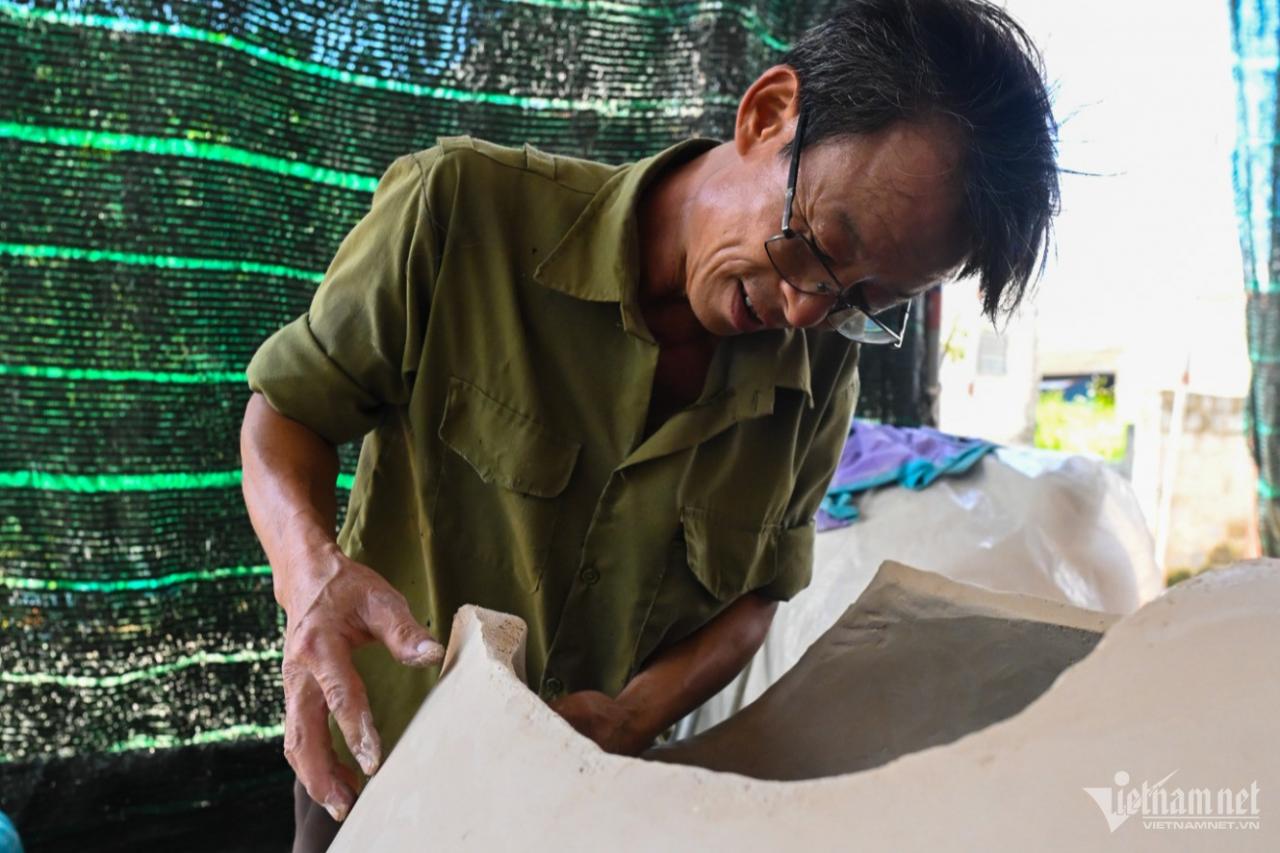 |  | 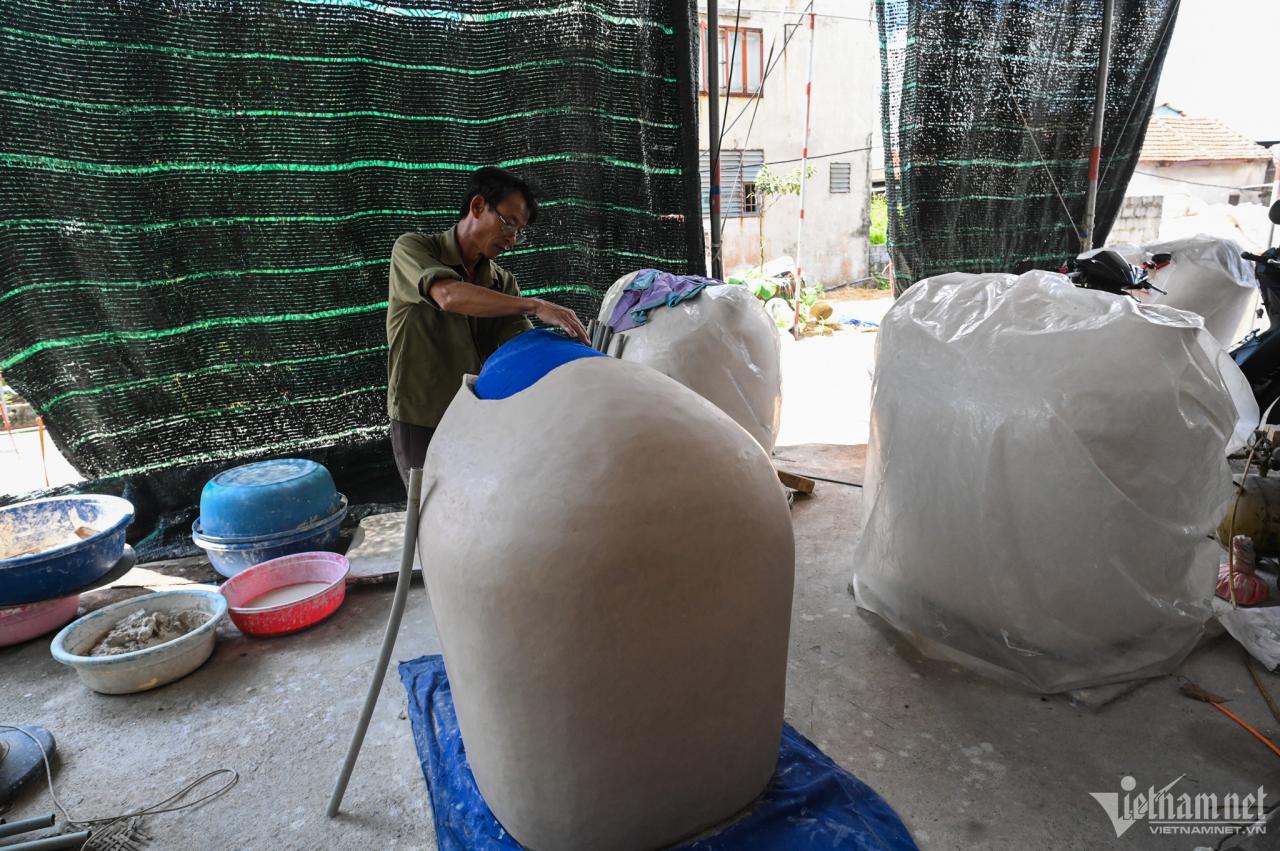 |
Mr. Duong imported heat-resistant white clay from Chi Linh (Hai Duong) and personally molded a glass pot for his furnace.
Depending on experience and secrets, each kiln owner will shape the pot in a different style. Usually the pot is round, more than 1m high, about 80cm wide, and can hold 500kg of glass. The "duck" pot needs to have 2 round mouths to feed the raw materials and take out the liquid glass after melting in the charcoal furnace.
“Previously, I tried buying ready-made pots from China, but the cost was quite expensive and the size was too small, not suitable for a completely handmade model,” Mr. Duong said.
Therefore, he researched and created his own cooking pot in his own style.
To make a cooking pot, he spends 10-15 days shaping it and also takes the same amount of time to dry it before putting it in the kiln. The cost for each pot is about 10 million VND, equivalent to buying ready-made pots but more suitable for household production.
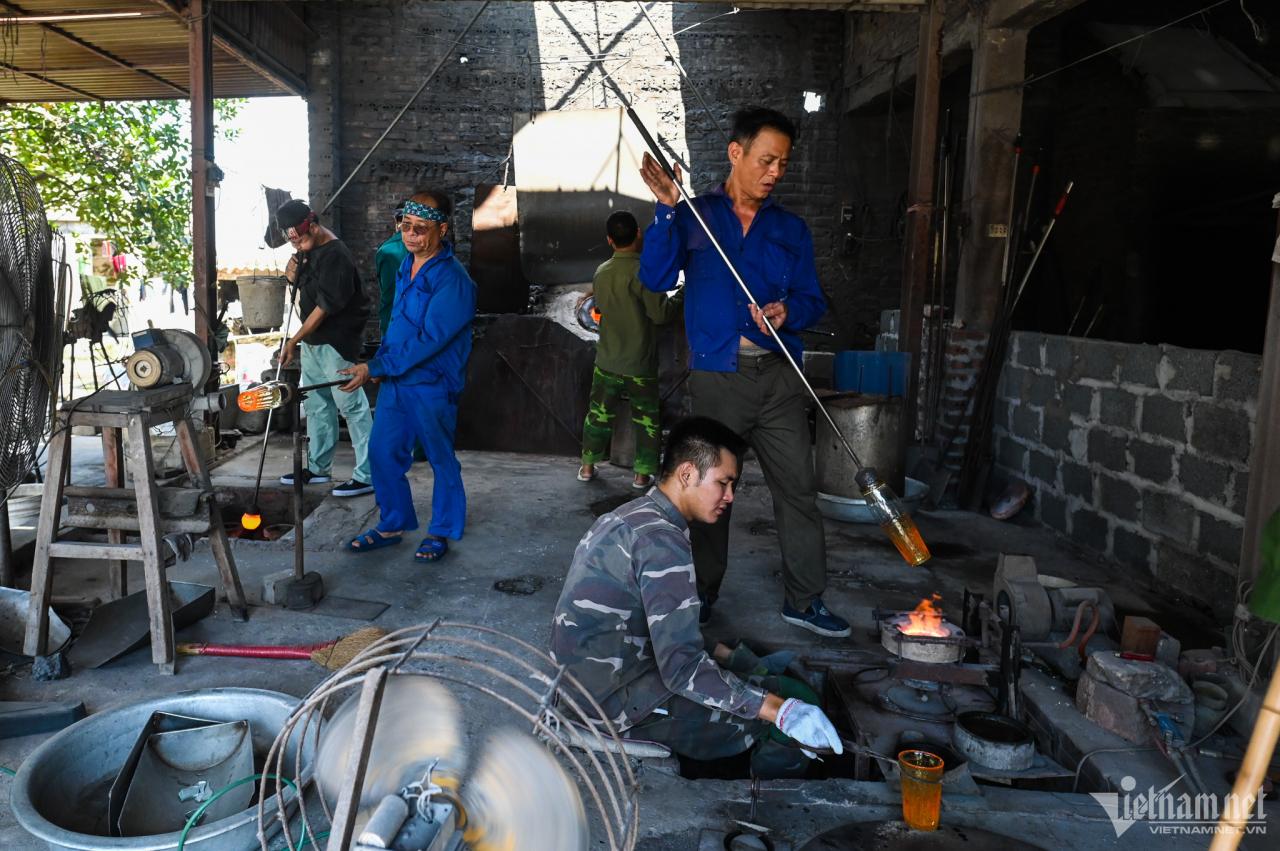
In a small workshop of about 25 square meters, Mr. Duong's blowers work diligently.
The first thing is to choose the raw materials. Instead of purchasing glass bottles and jars like before, now production facilities import broken glass pieces from glass factories. One person will be in charge of picking up the pieces (screening out dirt, crushing the glass pieces) before putting them into the furnace.
“The price of importing scrap glass is higher than that of other recycled materials, but we save on labor,” said Mr. Duong.
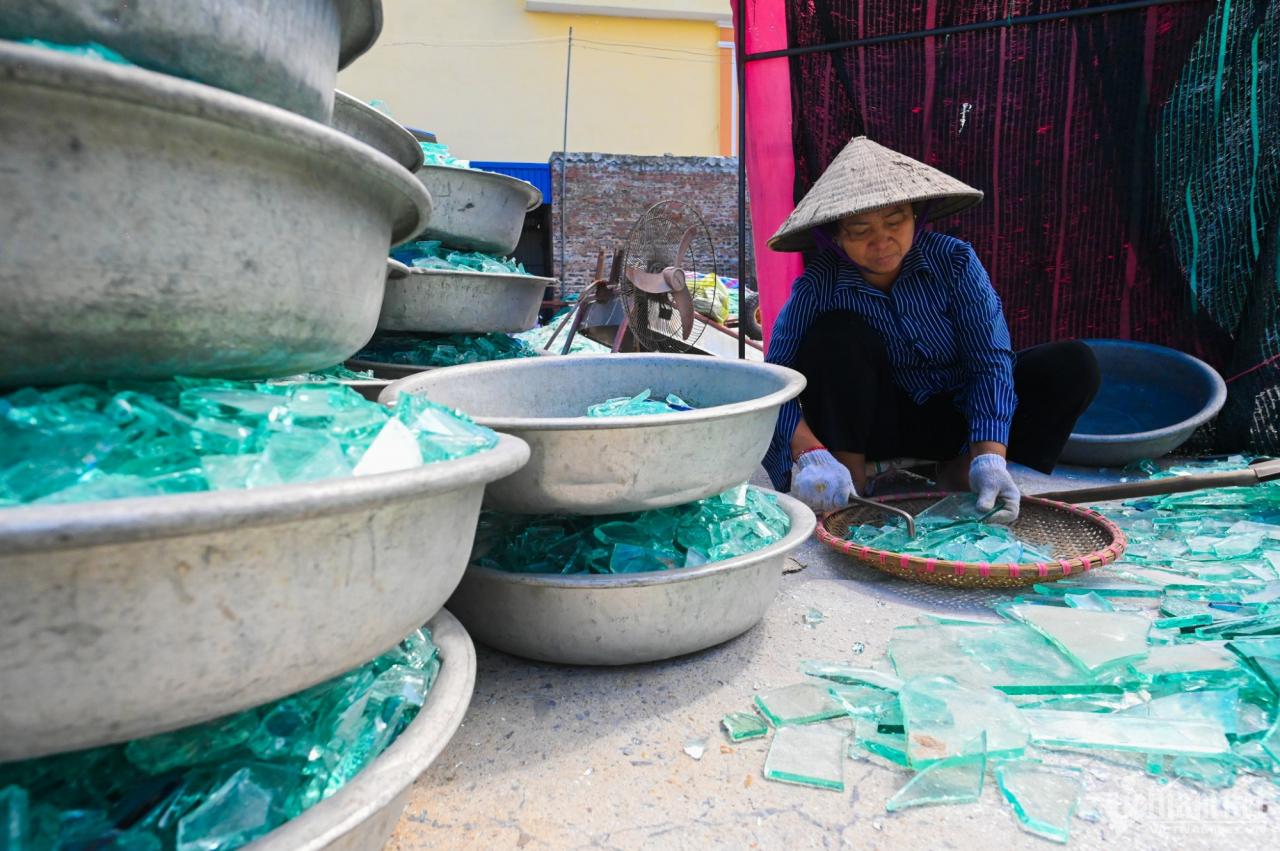
A worker (usually a woman) is responsible for the fragmentation, ensuring that the pots containing the broken glass are free of dirt before being put into the furnace and sorting them by color.
Next, one person will be responsible for adding glass to the melting pot. This step requires slow feeding so as not to affect the pot's capacity, until there are enough 500 kg of glass.
 | 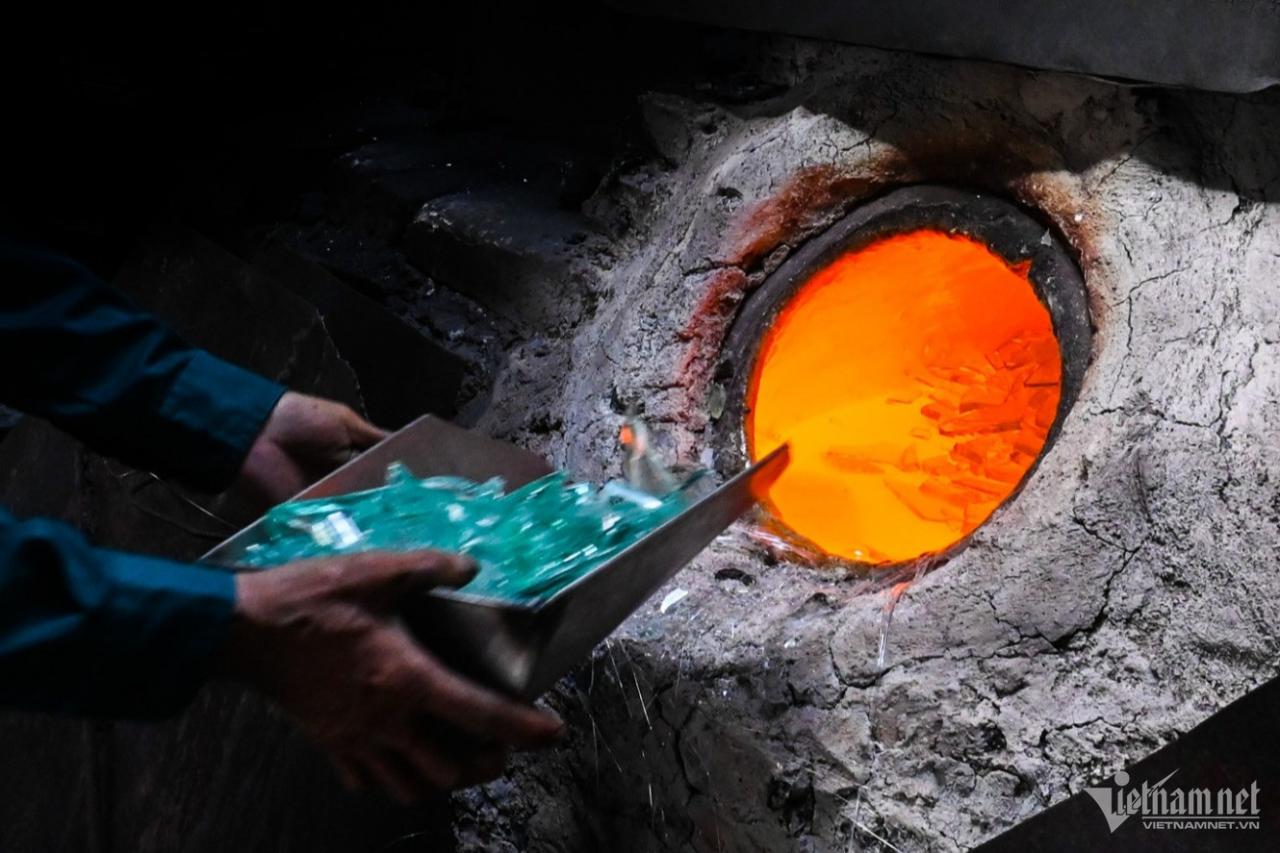 | 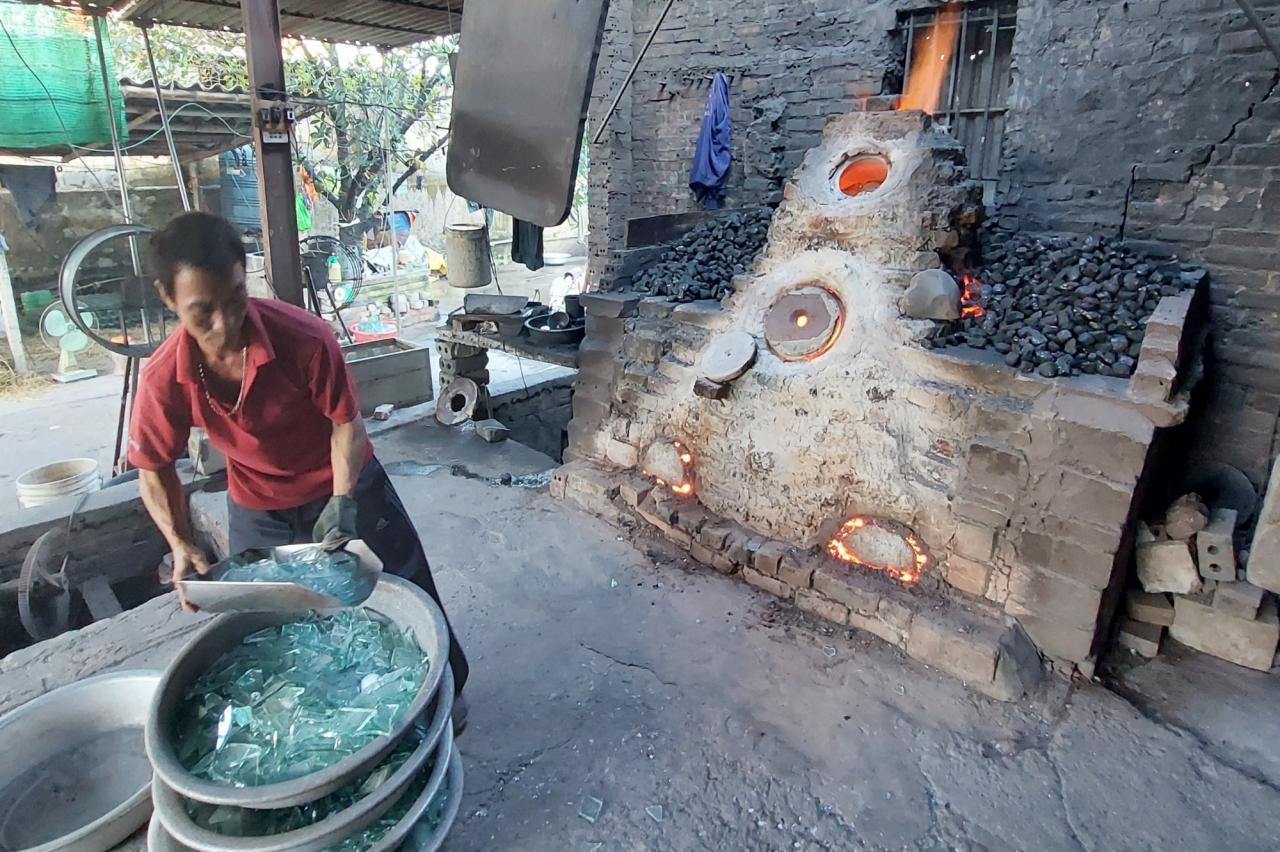 |
A batch of glass is usually cooked and tempered for 4 - 5 hours. When it reaches about 1,800 degrees, the glass pieces melt.
When the glass is hot enough and completely melted, the main workers will start a new shift. A line of 5 workers blowing, 1 person cutting the mouth of the cup, 1 person keeping the cup cool continuously working until all the molten glass in the furnace is gone.
The process of blowing glass requires the craftsman's skillful skills. Each person will use a metal tube about 1.5m long, take a sufficient amount of molten glass from the furnace, continuously roll the glass block on a flat surface with a little grease to create smoothness, glossiness and create a cylinder for the cup.
Then, the worker uses his mouth to blow into one end of the tube to blow the molten glass block to expand as desired and quickly put the glass block into the mold. The cup shaped in the mold is immediately transferred to the blower to cool down before cutting the cup mouth.
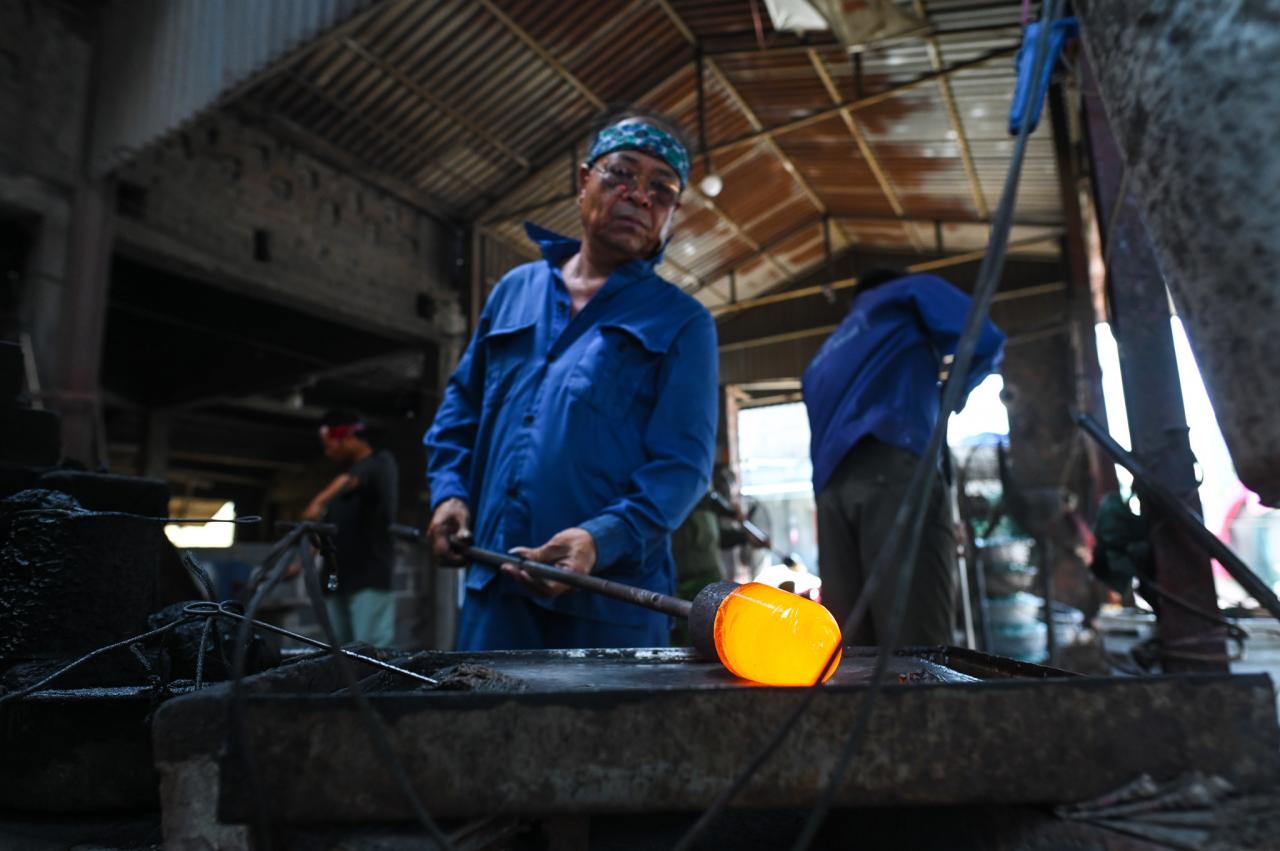 |  | 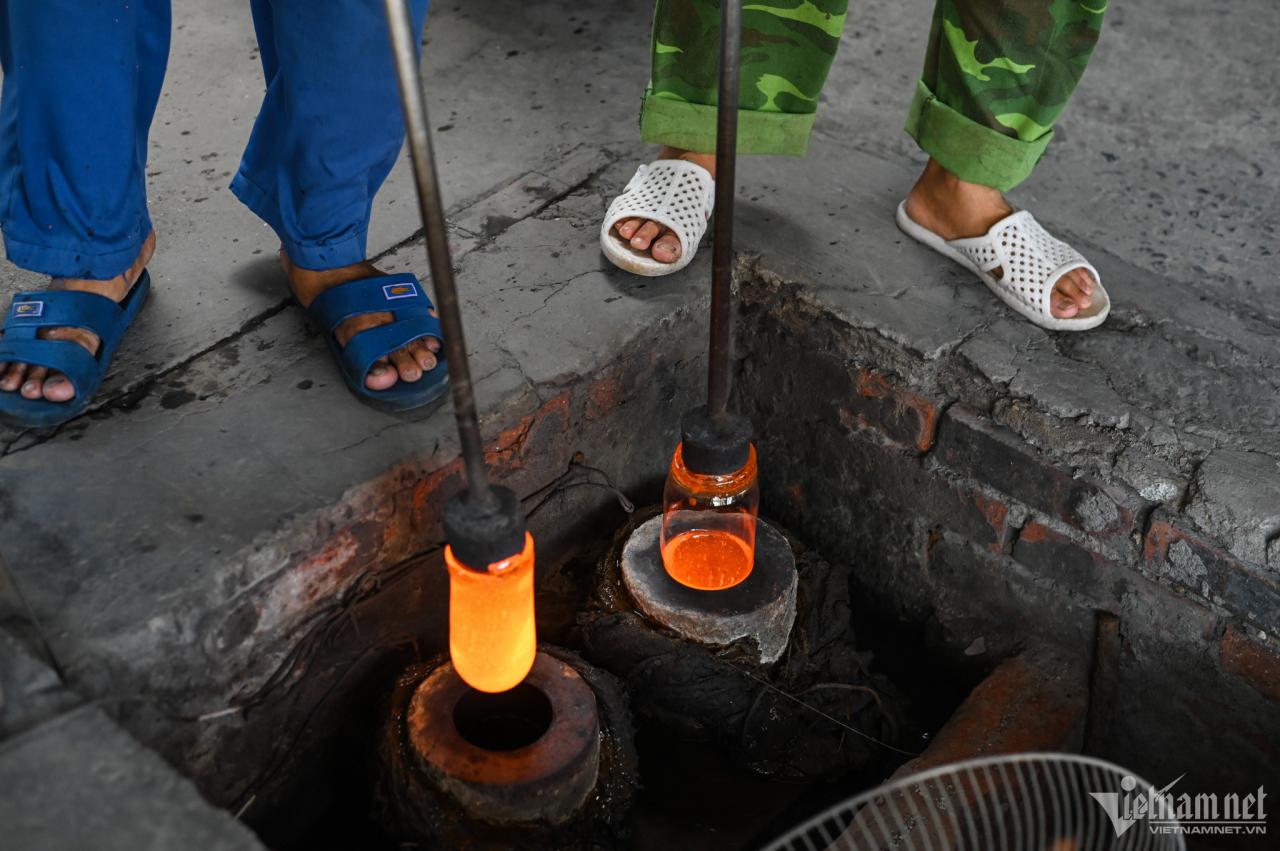 |
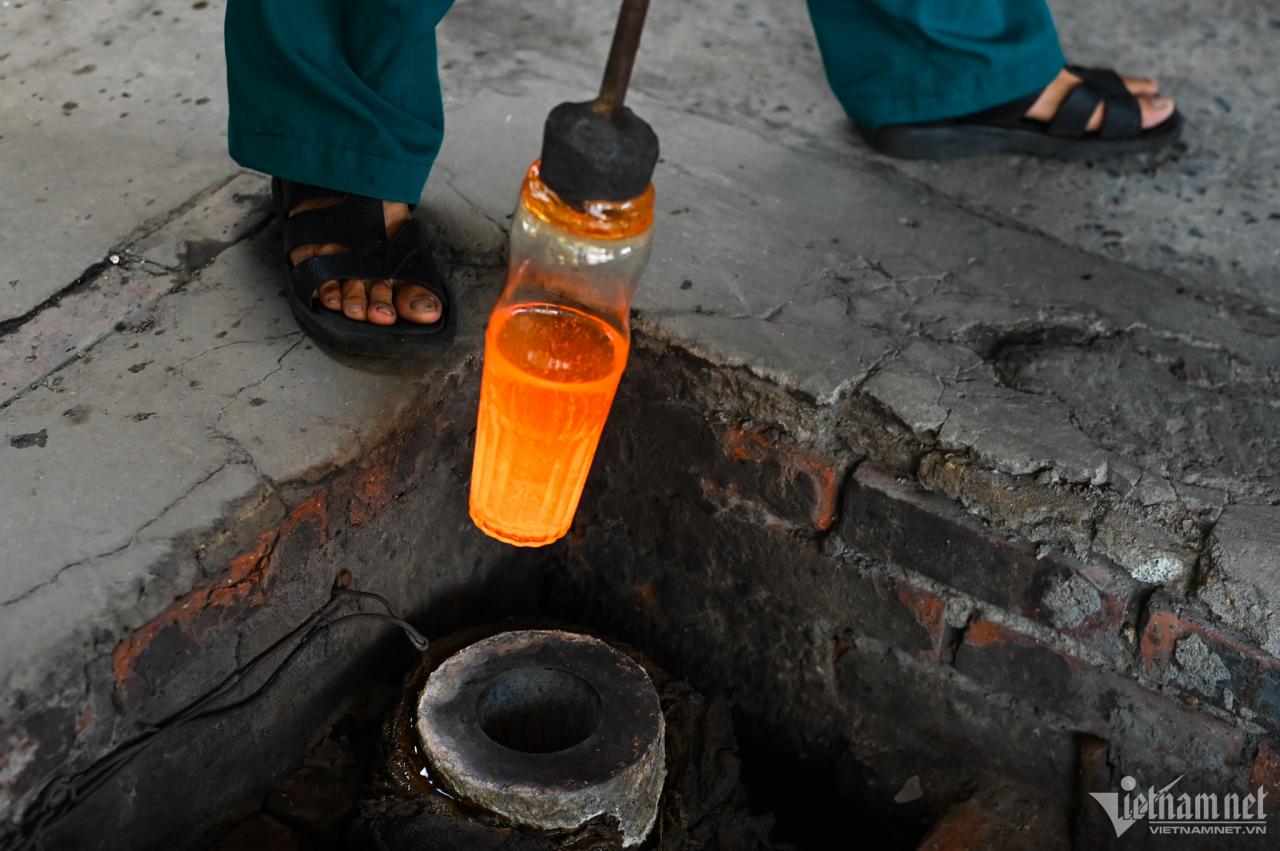 |  | |
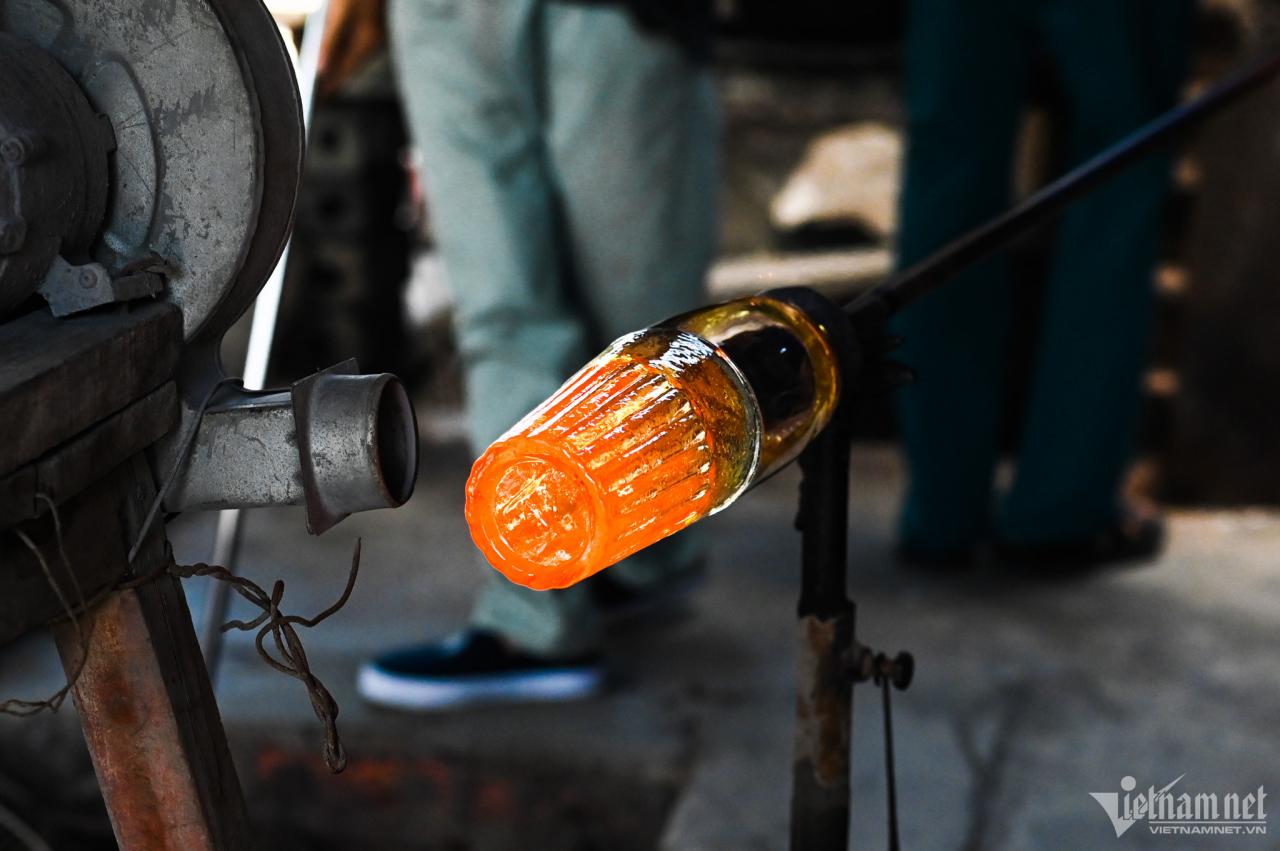 | ||
The edge cutter sits next to a hot gas stove to skillfully and meticulously cut the edge and round the mouth of the cup.
The red-hot mug that had just come out of the oven was taken by another worker to be cooled down with clean ash. “My worker will bury the mug in straw ash for 12-15 hours to cool it down slowly, avoiding cracking,” said Mr. Duong.
Every day, day and night, these workers work continuously in high temperature environment. Everyone's hands are rough and calloused.
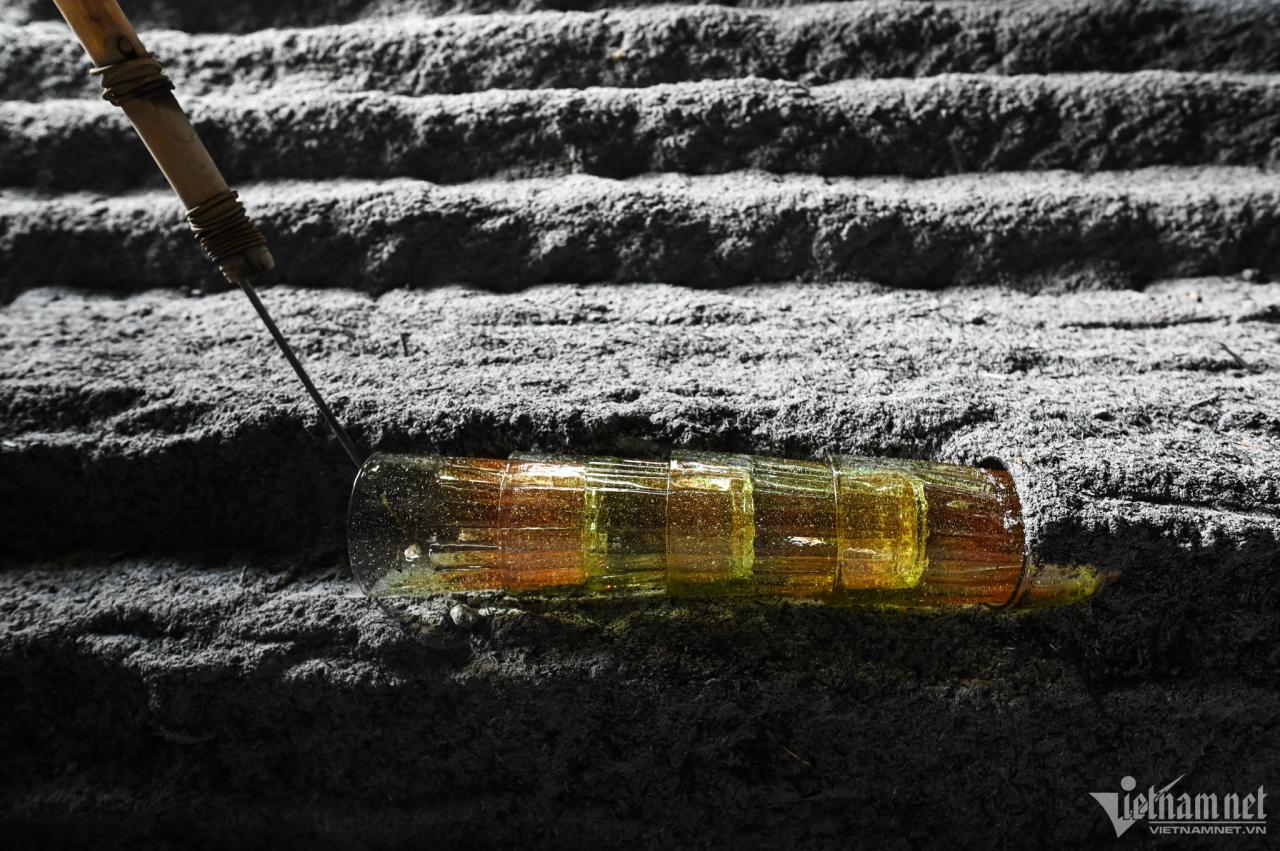 | 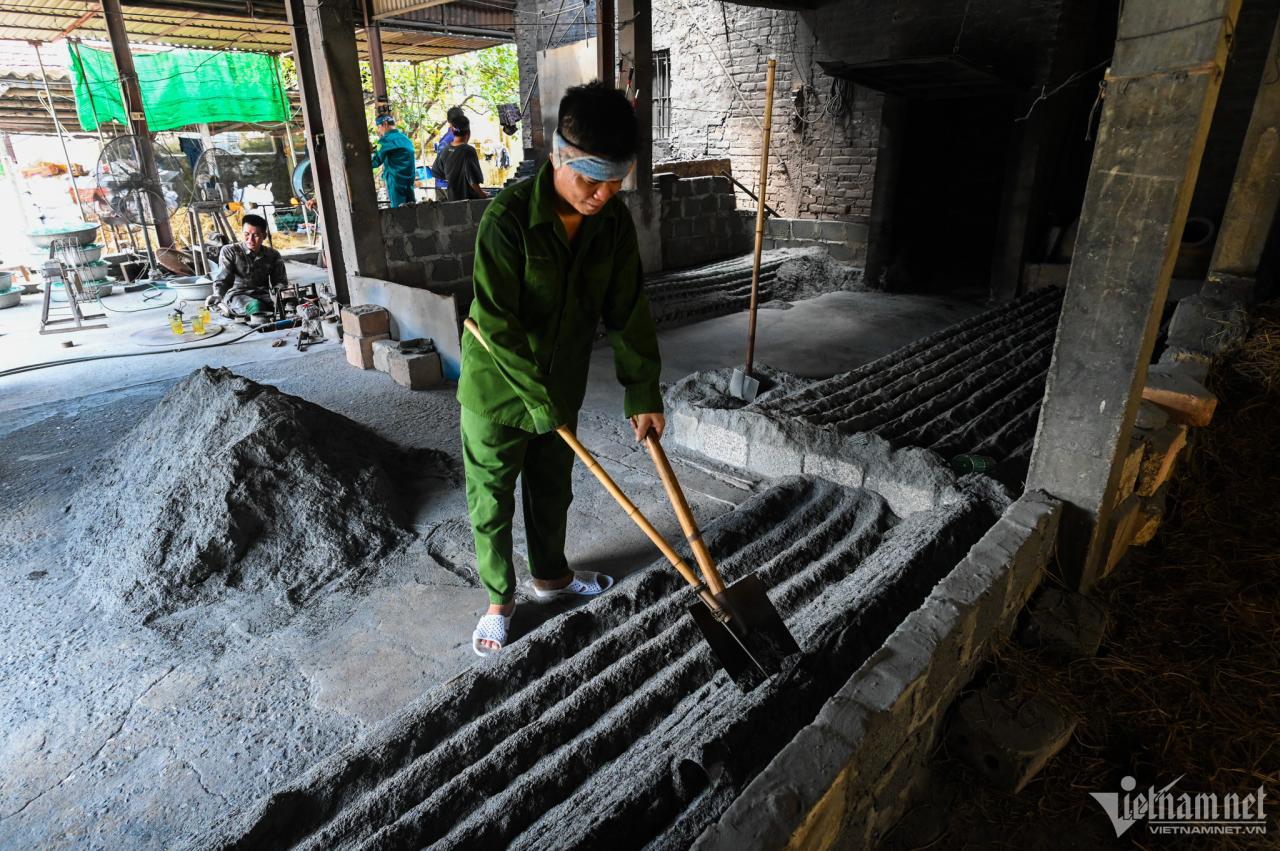 |
After 5 hours of hard work in a shift, from 500 kg of raw materials, the workers have created more than 1,000 glass cups. Each cup is a unique version of the traditional glass blowing profession.
Finally, when the cups are removed from the ash furnace, they are lined with straw and packed in boxes waiting for traders to come and take them away.
According to different distribution channels, the blue cup appears in most shops, especially Hanoi beer shops.
Although handmade products are not sophisticated, glossy and transparent, they have their own unique features, depending on the skill and breath of the blower.
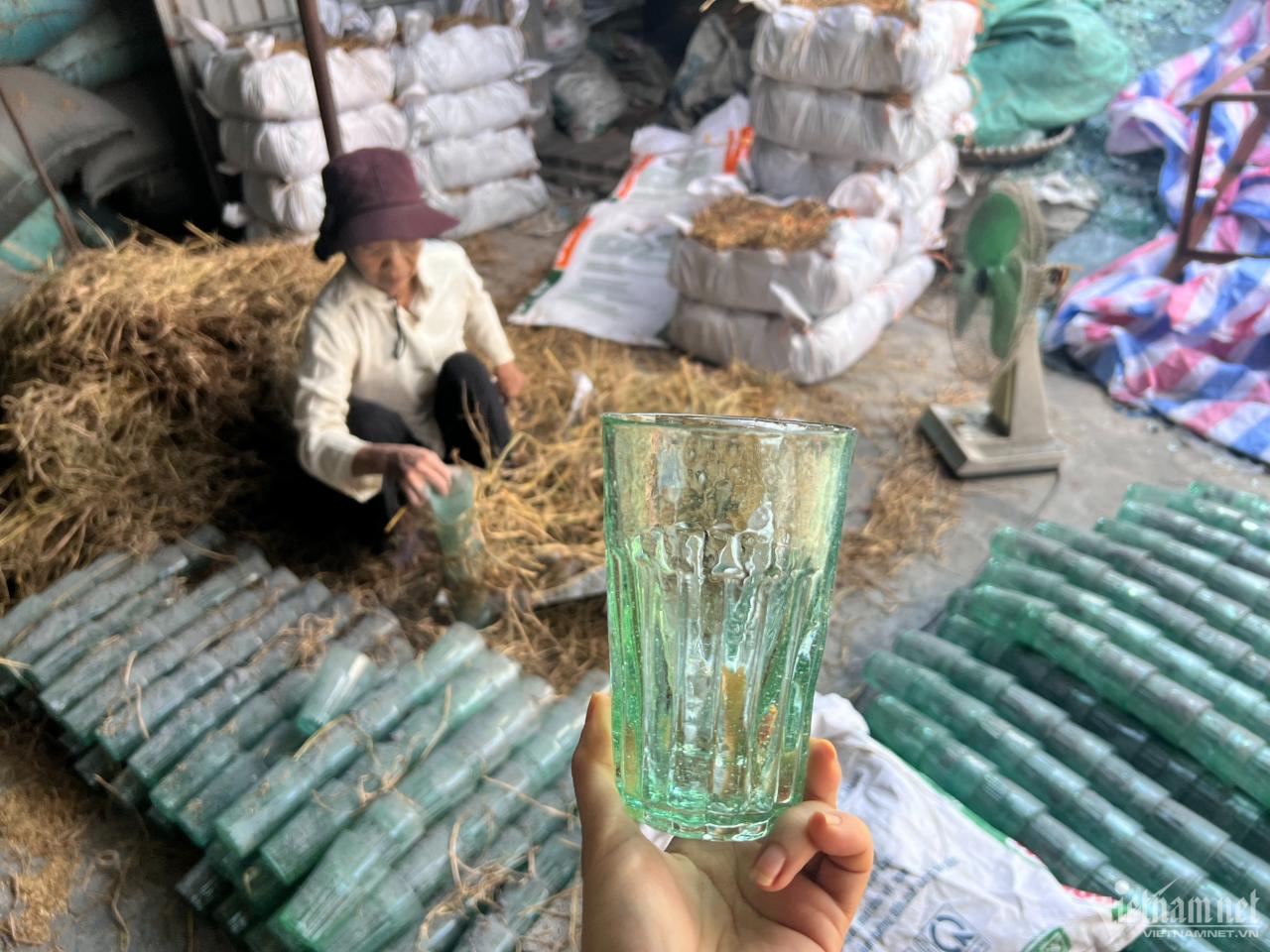
Not only creating attraction for beer drinkers, Xoi Tri village glass cups also become souvenirs for craft lovers at home and abroad.
| “I talked to the owner of the establishment, they said that just stopping for one day would make Hanoi bustling because this is a typical Hanoi beer cup. From this story, we can understand the importance of a strong product and promoting the creativity of local people,” Deputy Minister of Agriculture and Rural Development Tran Thanh Nam shared. |
Next: The son of the 'founder' tells about the golden age of the legendary beer mug
Vietnamnet.vn




![[Photo] General Secretary To Lam receives Chief of the Central Office of the Lao People's Revolutionary Party](https://vphoto.vietnam.vn/thumb/1200x675/vietnam/resource/IMAGE/2025/5/30/140435f4b39d4599a3d17975dfb444c5)

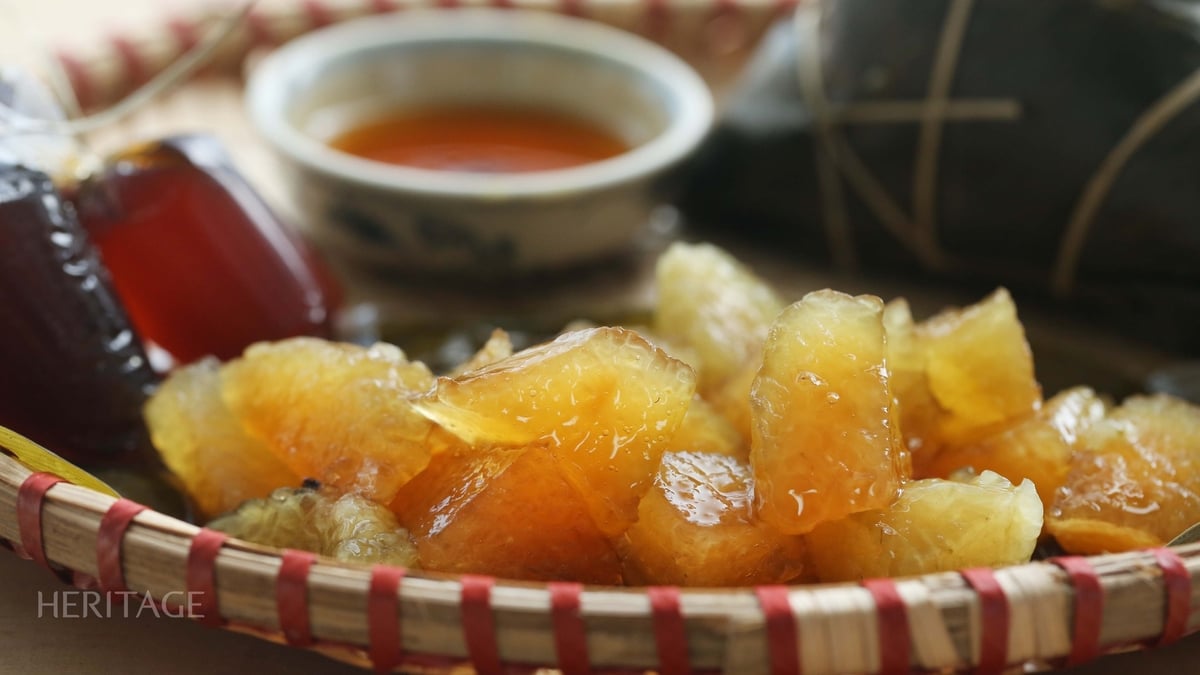


















![[Video] Urgently implement the Politburo's Conclusion on developing Vietnamese culture and people](https://vphoto.vietnam.vn/thumb/402x226/vietnam/resource/IMAGE/2025/5/31/259c6ed83af242b4ac529ccbc2c137f7)









![[Photo] National Conference "100 years of Vietnamese Revolutionary Press accompanying the glorious cause of the Party and the nation"](https://vphoto.vietnam.vn/thumb/1200x675/vietnam/resource/IMAGE/2025/5/30/1cf6cd5c8a934ebfa347028dcb08358c)












































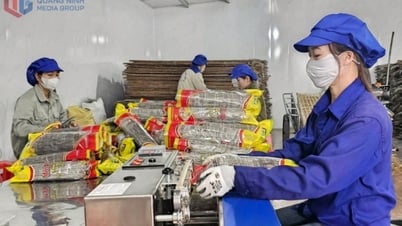




















Comment (0)